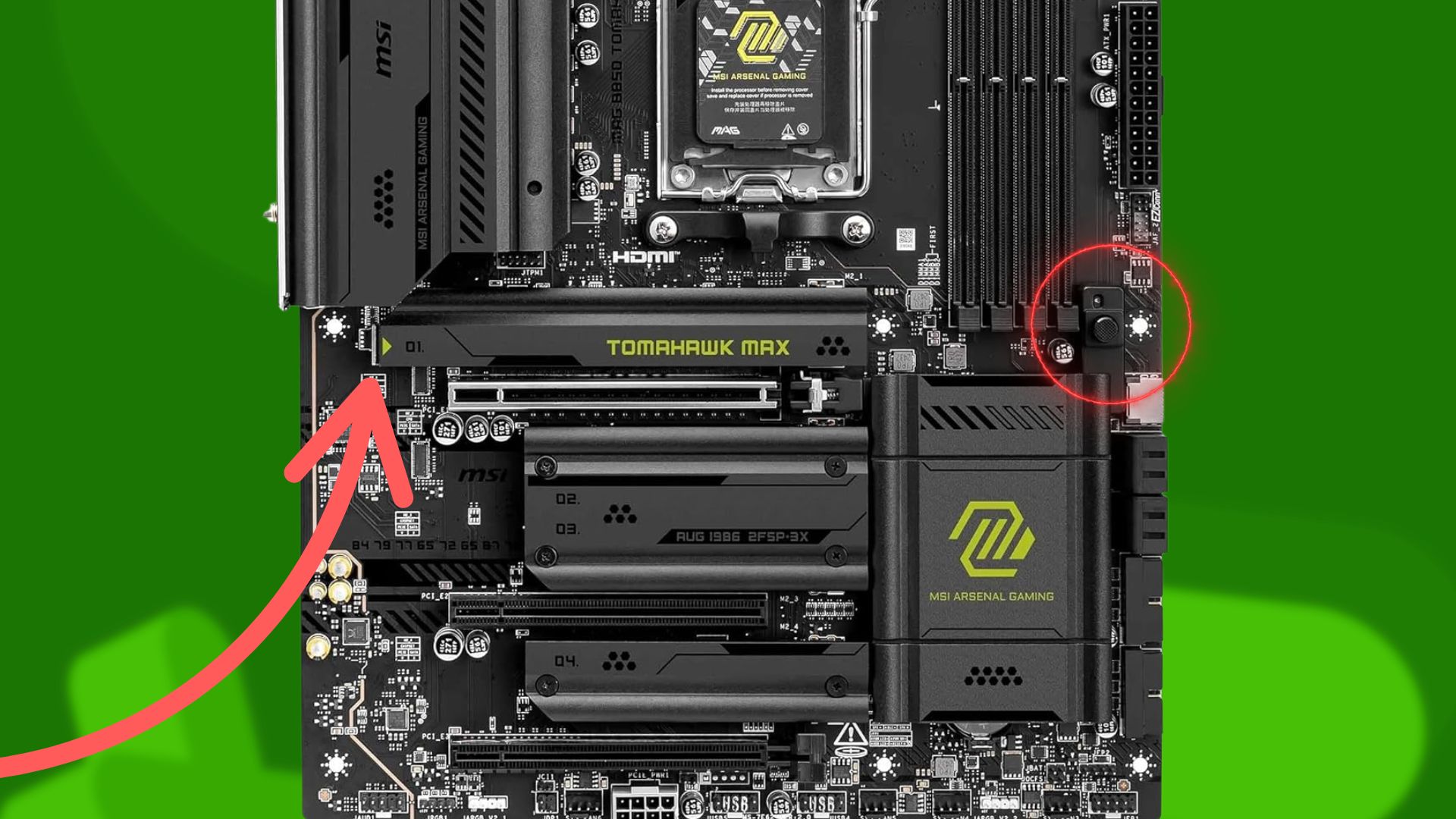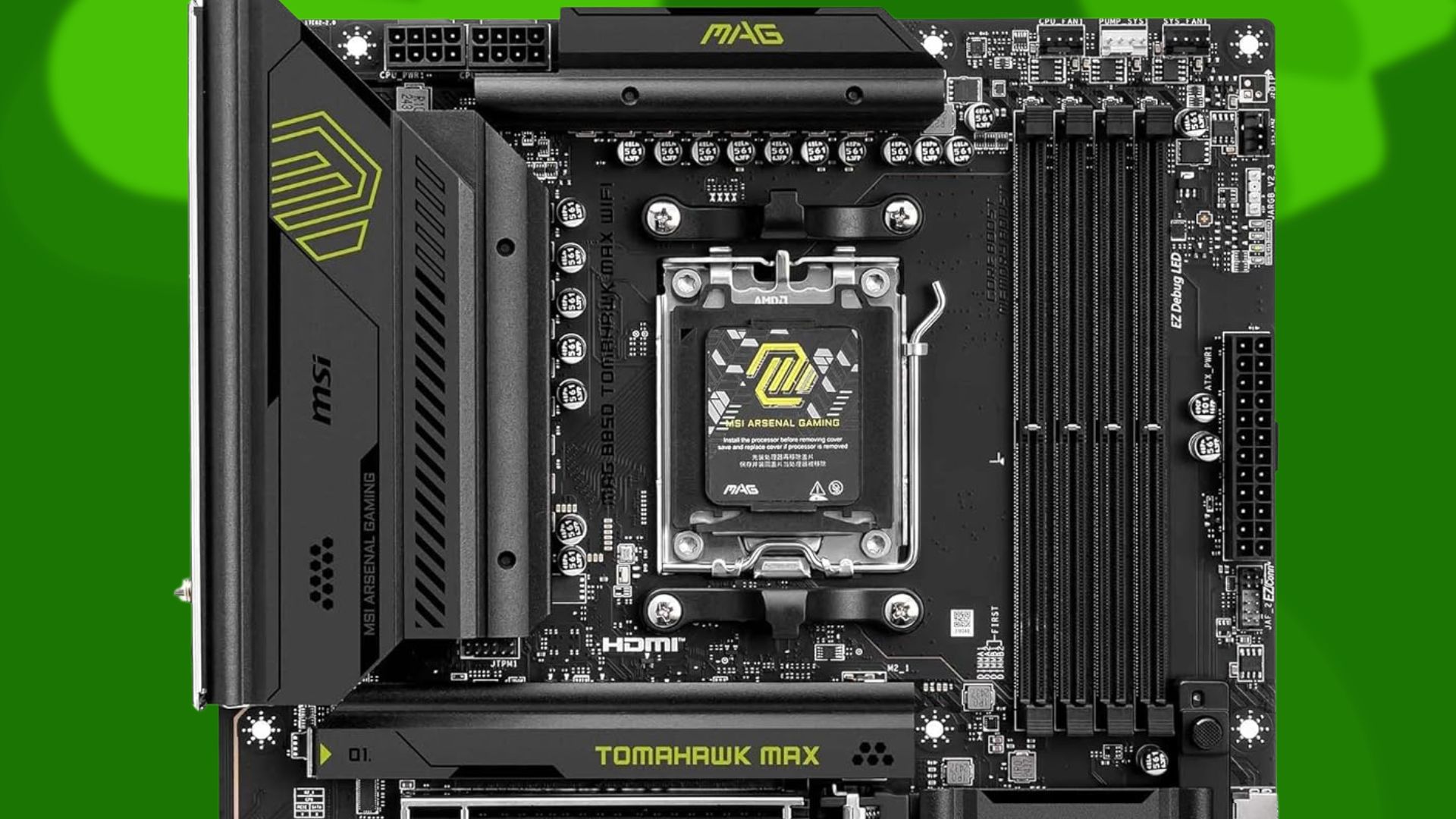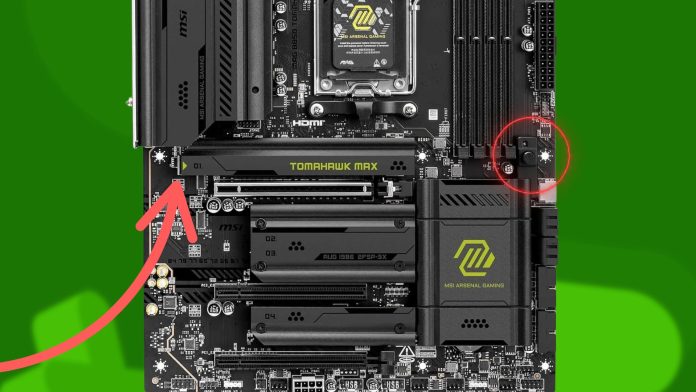
Last weekend, I helped a good friend of mine build his very first gaming PC. It was a great time, and although we hit a few speed bumps along the way (to be expected with any build), the process itself went extremely smoothly. All credit for that goes to my friend Danny, who had, without knowing it, chosen a motherboard that made the entire process an absolute breeze.
“What made you choose this motherboard?” I asked him. He told me some online research had led him to it, but MSI made his previous laptop, so he was already drawn to that brand. He had bought the MSI MAG B850 Tomahawk Max Wifi Motherboard, which, at the moment, is discounted down to $225.99 if you get it from Walmart. This motherboard has all the AM5 features you could need to create one of the best gaming PCs, including Gen 5 SSD support and excellent USB connectivity in its IO, but it also has a slew of quality-of-life bonuses I wish were on other boards.
For starters, its primary M.2 SSD slot is totally toolless. It has a heatsink that releases via a small button on its side, meaning you can access it in a heartbeat. After removing it, I found that it doesn’t have one of those pesky, twisty, turn screws to grapple with either.
At first, I wondered how I was going to lock the SSD down into the slot, but then I noticed a small, metallic push button. The MAG B850 uses this clever little metal catch that automatically grabs your SSD as you install it and holds it down safely.
Need to swap it out later on? Just push down on the metal button and it’ll pop back out. That’s extraordinary design, and I have no idea why it hasn’t become the norm before now. If it was widely adopted, it’d make installing SSDs so much safer, because you wouldn’t need to worry about whether or not you’ve overtightened a tiny screw that’s bending or otherwise damaging your drive.
Similarly, the GPU release-catch isn’t located right next to the PCIe slot where you plug in your graphics card. It’s a button at the edge of your motherboard. Again, ingenious design because I don’t know who on earth can ever squeeze their hands past their cooling towers, SSD heatsinks, and under their GPU in order to release one through one of these silly plastic hinges. These are always so flimsy as well, and I’ve even had one break on me when I pressed it down. Having this on the side of the board makes it so much easier to access.

After the technical aspects of the build were done, I also liked that there was a handy set of operating LEDs to tell me that each RAM module was working properly. These are standard on most motherboards today, but a dedicated RAM set goes above and beyond because and indicates if one or more of your RAM sticks isn’t playing ball. Whenever I’ve had posting issues after a fresh build, RAM has been the issue 90% of the time, so it was really handy to have that peace of mind when throwing together Danny’s PC.
The one thing that caused problems was that, for some reason, MSI hadn’t pre-installed Wi-Fi drivers onto its board, and since we didn’t have a LAN connection possible in the room we were setting the PC up, that meant a few headaches. Luckily, when I did get Wi-Fi working and went to plug in the small antenna, I was delighted that it attached into the IO through a simple snap-on set of plugs. No annoying screw-plugs here, thank you.
To tell the truth, I was a little bit jealous of Danny’s motherboard. These kinds of quality-of-life boosts would make swapping out parts so easy. I hope more motherboards in the future use the clever design features MSI has, because these are the kinds of things that remove a lot of awkward hassles when PC building.
For more gaming PC component recommendations, check out the best RAM for gaming, the best CPU for gaming, and the best PC cases.
